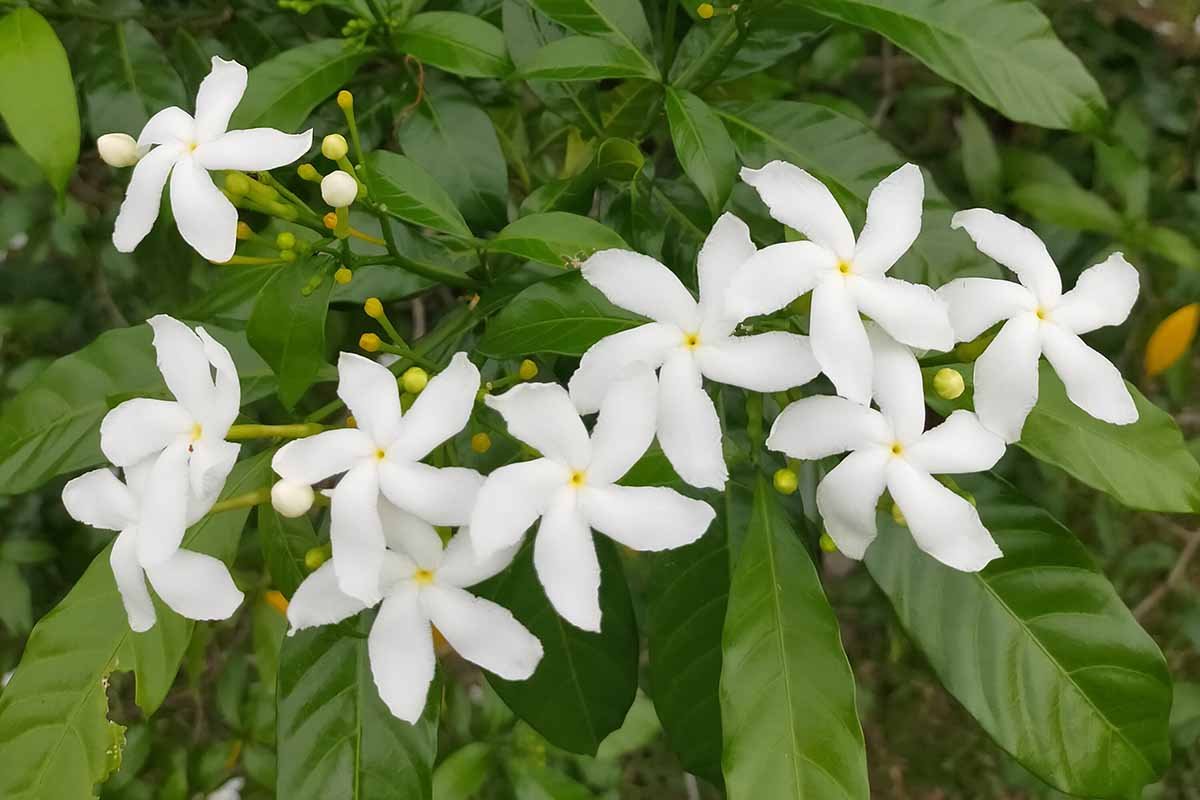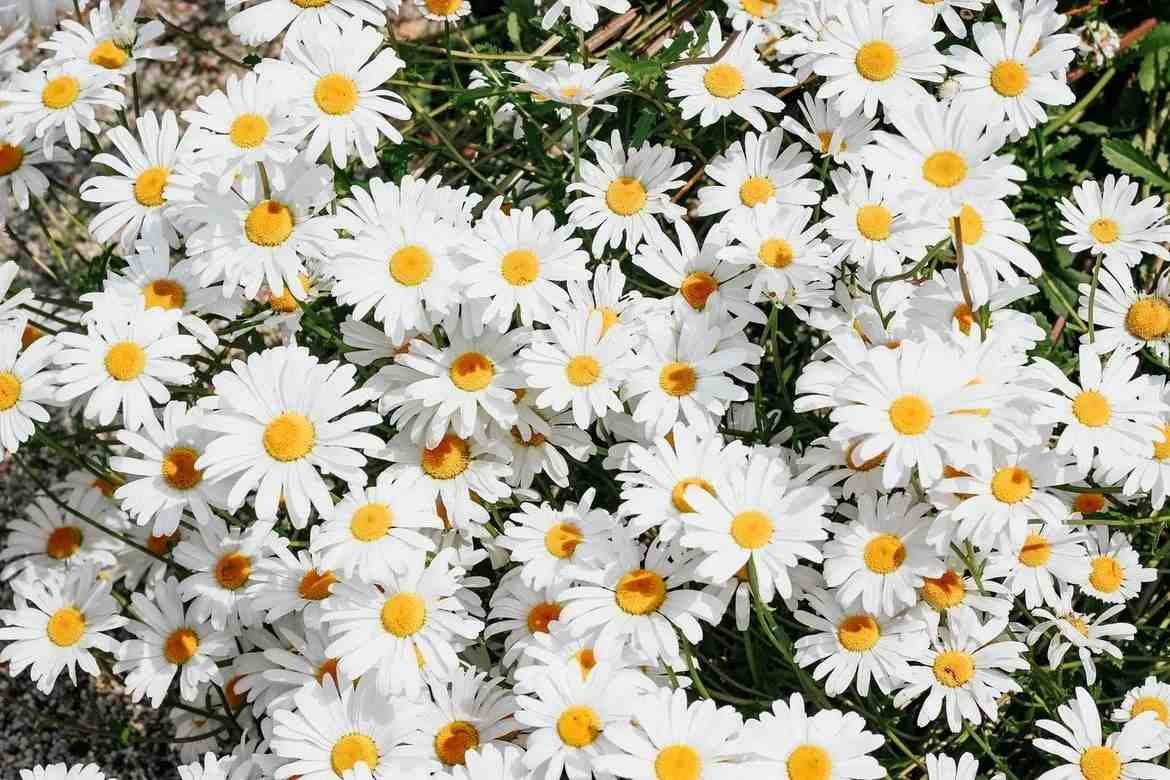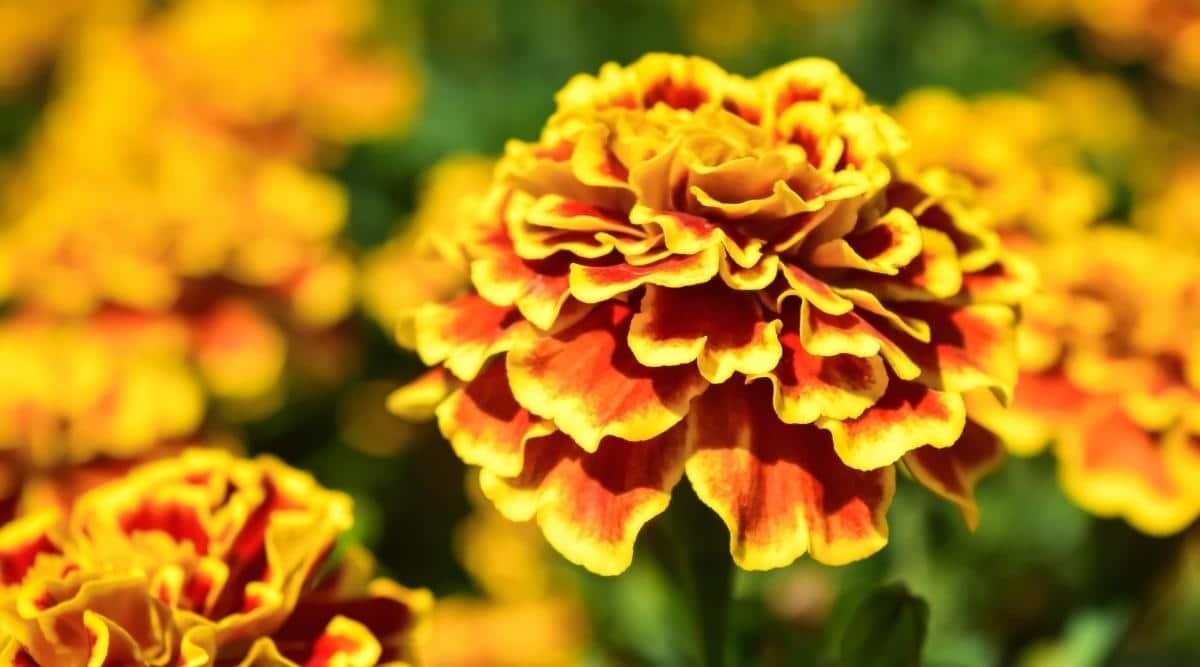Jasmine Flower Facts, Uses, Cultivation, Botany, Historical Significance
 Jasmine Flower Facts
Jasmine Flower FactsJasmine Flower Facts | Description | Distribution and Habitat | Botany and evolution | Cultivation | Uses | Cultural | Interesting facts | frequently asked questions about Jasmine
Jasmine, the queen of flowers, is renowned for its delicate beauty and enchanting fragrance. This exquisite bloom has been cherished for centuries in many cultures, from the ancient Egyptians who used it in perfumes, to the Chinese who saw it as a symbol of love and beauty. With its stunning white petals and sweet aroma, Jasmine is the perfect addition to any garden, bringing a touch of elegance and romance to any space. Not only is this flower aesthetically pleasing, but it also has numerous health benefits, including reducing stress and promoting relaxation. Whether you’re a gardening enthusiast or simply appreciate the beauty of nature, Jasmine is a must-have in any collection.
Taxonomy of Jasmine
| Kingdom | Plantae |
|---|---|
| Clade | Angiosperms |
| Clade | Eudicots |
| Clade | Asterids |
| Order | Lamiales |
| Family | Oleaceae |
| Genus | Jasminum |
| Species | Jasminum sambac |
| Subspecies | Jasminum sambac subsp. sambac |
| Variety | Jasminum sambac var. grandiflorum |
| Cultivar | Jasminum sambac ‘Belle of India’ |
Morphology of Jasmine
| Flower Part | Description |
|---|---|
| Petals | Usually five, white, sometimes pink or yellow |
| Sepals | Usually five, green, lance-shaped |
| Stamens | Usually two, long and slender, with yellow anthers |
| Pistil | Ovary superior, three-carpellary, with long style and stigma |
| Inflorescence | Cluster of flowers at the end of branches, often cymose |
| Fruit | Berry, fleshy, black when ripe, containing several seeds |
| Leaves | Opposite, simple, oval-shaped, with smooth margins |
| Stem | Woody, cylindrical, with green bark and long internodes |
| Roots | Fibrous, branching, with root hairs for absorbing nutrients |

Description of Jasmine
Jasmine is a fragrant flowering plant that belongs to the Oleaceae family, which also includes olive and lilac trees. There are over 200 species of Jasmine, but the most popular one is Jasminum sambac, also known as Arabian Jasmine or Sampaguita.
The Jasmine flower has a unique morphology. It typically has five white or yellow petals and five green lance-shaped sepals. The flower has a distinct fragrance that is both sweet and floral, making it a popular choice for perfumes and essential oils.
The Jasmine plant is native to tropical regions, including India, Southeast Asia, and China. It prefers warm and humid climates and grows best in well-draining soil with plenty of sunlight. The plant can grow up to six feet tall and has long, slender stems with glossy green leaves.
Jasmine is often used in traditional medicine for its therapeutic properties. It has been found to have antioxidant and anti-inflammatory effects, and is believed to reduce stress and promote relaxation. In some cultures, Jasmine is also used as a symbol of love, purity, and beauty.
In conclusion, Jasmine is a beautiful and aromatic flower that is beloved by many cultures around the world. Its unique morphology, sweet fragrance, and therapeutic benefits make it a popular choice for gardens, perfumes, and traditional medicine.
Distribution and habitat of Jasmine
Jasmine, a member of the Oleaceae family, is a flowering plant that has a wide distribution and is found in many different habitats around the world. There are over 200 species of Jasmine, and they can be found in tropical and temperate regions.
The Jasmine plant is native to Southeast Asia, particularly India, where it grows in the wild as a shrub or a vine. From there, it has spread to many other regions, including China, Japan, Africa, and Europe. In some regions, such as the Middle East, Jasmine has been cultivated for centuries for its fragrant flowers and leaves.
Jasmine typically prefers warm and humid environments and can grow in a variety of soils, including sandy loam, clay, and limestone. It thrives in well-draining soil that is rich in nutrients, and requires plenty of sunlight to grow and flower.
In the wild, Jasmine can be found growing in a variety of habitats, including tropical rainforests, riverbanks, and scrublands. It is also commonly grown in gardens and used as a landscaping plant, particularly in warm and humid regions.
Overall, Jasmine is a versatile plant that can adapt to a variety of environments and has a wide distribution around the world. Its ability to grow in different habitats and climates has made it a popular plant for both cultivation and research.
Botany and evolution of Jasmine
Jasmine is a genus of flowering plants that belongs to the Oleaceae family, which also includes olive and lilac trees. There are over 200 species of Jasmine, and they can be found in a variety of habitats around the world.
The Jasmine plant is an angiosperm, which means it produces seeds enclosed in an ovary. It is a dicot, which means it has two cotyledons (seed leaves) and net-like veins on its leaves. The plant has a woody stem, with long, slender branches and glossy green leaves that are arranged in opposite pairs. The flowers of the Jasmine plant are usually white or yellow, with five petals and a sweet, floral fragrance.
The evolution of the Jasmine plant can be traced back to the late Cretaceous period, around 70 million years ago. The plant is believed to have originated in the tropical regions of Asia and then spread to other parts of the world through a combination of natural and human-mediated dispersal.
The classification of the Jasmine plant has undergone several revisions over the years, with some species being reclassified or merged with other genera. Currently, the genus Jasminum includes over 200 species, with the most popular one being Jasminum sambac.
The study of Jasmine botany and evolution is important for understanding the diversity and adaptations of flowering plants, as well as their role in ecosystems and human culture. It can also inform efforts to conserve and protect endangered species of Jasmine and their habitats.
Cultivation of Jasmine
Jasmine is a popular flowering plant that is cultivated around the world for its fragrant flowers, essential oils, and ornamental value. There are many species of Jasmine, but the most commonly cultivated ones include Jasminum sambac, Jasminum grandiflorum, and Jasminum officinale.
Jasmine is a warm-weather plant that requires plenty of sunlight and well-draining soil to grow and flower. It can be grown in a variety of climates, but it prefers tropical or subtropical regions with warm and humid conditions. In cooler regions, Jasmine can be grown indoors or in greenhouses to protect it from frost and cold temperatures.
Propagation of Jasmine can be done through cuttings or seeds. Cuttings are the most common method, as they allow for the reproduction of desirable traits and ensure uniformity in the plant. Seeds, on the other hand, can take longer to germinate and may produce plants with varying characteristics.
Jasmine plants require regular watering, but the soil should be allowed to dry out slightly between watering to prevent waterlogging and root rot. Fertilizer can be applied once a month during the growing season to provide the plant with essential nutrients.
Pruning can be done to shape the plant and promote healthy growth. Dead or diseased branches should be removed promptly to prevent the spread of disease.
Jasmine is commonly used in gardens, landscaping, and as indoor plants. The flowers are also used in the production of perfumes, essential oils, and teas. The plant has also been used in traditional medicine for its therapeutic properties.
Overall, cultivation of Jasmine requires proper care and attention to ensure healthy growth and vibrant flowers. With its fragrant blooms and versatile uses, Jasmine is a beloved plant that has been cultivated for centuries.
Uses of Jasmine
Jasmine is a popular flowering plant that has been used for a variety of purposes for centuries. The plant’s fragrant flowers and essential oils have a range of applications, from perfumery to traditional medicine.
Perfumery: Jasmine is commonly used in perfumery due to its sweet, floral fragrance. The essential oil extracted from the flowers is used to create perfumes, colognes, and other fragrances. Jasmine essential oil is also used in aromatherapy for its calming and mood-boosting effects.
Traditional Medicine: Jasmine has been used in traditional medicine for its therapeutic properties. The plant has been used to treat a variety of ailments, including headaches, anxiety, and digestive issues. Jasmine tea, made from the plant’s flowers, is also believed to have health benefits, including reducing inflammation and improving digestion.
Culinary Use: The flowers of some Jasmine species, such as Jasminum sambac, are used in cooking and baking. The flowers are added to tea, rice dishes, and desserts to provide a sweet and floral flavor.
Landscaping and Decoration: Jasmine is also commonly used as an ornamental plant in gardens and landscaping. The plant’s fragrant flowers and glossy green leaves make it an attractive addition to any garden or indoor space. Jasmine garlands and wreaths are also used for decoration in some cultures.
Overall, Jasmine is a versatile plant that has a range of uses, from perfumery and traditional medicine to culinary use and decoration. Its fragrant flowers and essential oils have made it a beloved plant for centuries, and its many uses continue to be explored and appreciated today.
Cultural and Historical Significance of Jasmine
Jasmine has been an important cultural and historical symbol in many societies throughout the world. The plant’s fragrant flowers and essential oils have been used in a variety of cultural and religious traditions, as well as in literature and art.
In India, Jasmine is considered a sacred flower and is often used in religious ceremonies and as an offering to deities. The flower is also a symbol of love and purity and is used in weddings and other important celebrations.
In China, Jasmine has been used in traditional medicine for centuries and is believed to have a range of health benefits. The flower is also associated with love and is often given as a gift to express affection.
In Iran, Jasmine has been used in traditional medicine and is believed to have soothing and calming properties. The flower is also used in perfumery and is a popular scent in traditional Iranian fragrances.
In literature and art, Jasmine has been used as a symbol of beauty, love, and purity. The plant has been referenced in works by Shakespeare, Jane Austen, and other notable writers, and has been depicted in paintings, sculptures, and other forms of art.
Overall, Jasmine has played an important role in many cultures throughout history and continues to be a beloved plant today. Its fragrant flowers and essential oils have been used for a variety of purposes, from traditional medicine to perfumery, and its cultural and historical significance is a testament to its enduring popularity.
Explanatory Notes for Jasmine
Explanatory notes for a flower typically provide additional information about the plant’s characteristics, habitat, cultivation, and uses. Here are some potential explanatory notes for the Jasmine flower:
- Characteristics: Jasmine is a fragrant flowering plant that belongs to the Oleaceae family. It typically has glossy green leaves and small, white or yellow flowers that bloom in the spring or summer. Some species of Jasmine, such as Jasminum sambac, have larger, more prominent flowers that are commonly used in perfumery and traditional medicine.
- Habitat: Jasmine is native to tropical and subtropical regions, including Asia, Africa, and the Mediterranean. The plant thrives in warm, humid climates and requires well-draining soil and plenty of sunlight to grow and flower. Jasmine is commonly cultivated around the world for its ornamental value and essential oils.
- Cultivation: Jasmine can be propagated through cuttings or seeds, and requires regular watering and fertilization to ensure healthy growth. The plant can be grown in gardens, landscaping, and indoor spaces, and requires pruning to maintain its shape and promote healthy growth. Jasmine is sensitive to frost and cold temperatures, and may need to be protected in cooler climates.
- Uses: Jasmine is used in a variety of applications, including perfumery, traditional medicine, and culinary use. The plant’s essential oil and flowers are used to create fragrances, aromatherapy products, and teas. Jasmine is also used as an ornamental plant in gardens and landscaping, and has cultural and historical significance in many societies throughout the world.
Overall, explanatory notes for Jasmine can provide a more detailed understanding of the plant’s characteristics, habitat, cultivation, and uses. This information can be useful for gardeners, perfumers, and anyone interested in the cultural and historical significance of this beloved flowering plant.
Interesting facts about Jasmine
Here are 10 interesting facts about the Jasmine flower:
- Jasmine is not just one flower, but a genus of over 200 species of flowering plants.
- The name “Jasmine” is derived from the Persian word “yasmin,” which means “gift from God.”
- Jasmine is believed to have originated in the Himalayas, but is now cultivated and grown around the world.
- The flowers of Jasmine are commonly used in perfumery, as the oil extracted from the flowers is highly fragrant and aromatic.
- Jasmine is also used in traditional medicine in many cultures, as it is believed to have a range of health benefits.
- In some societies, Jasmine is considered a symbol of love, purity, and spiritual devotion.
- Some species of Jasmine are used to make teas and other culinary products, as the flowers have a sweet and delicate flavor.
- Jasmine is a popular ornamental plant and is often grown in gardens and landscaping, as well as in indoor spaces.
- The scent of Jasmine is believed to have a calming and relaxing effect, and is often used in aromatherapy products.
- Jasmine has been referenced in literature and art for centuries, and is a beloved symbol of beauty, love, and purity in many cultures around the world.
General queries or frequently asked questions about Jasmine
What is Jasmine?
Jasmine is a genus of flowering plants that includes over 200 species. The plants are known for their fragrant flowers and essential oils, which are used in perfumery, traditional medicine, and culinary applications.
What are the different types of Jasmine?
There are many different species of Jasmine, including Jasminum officinale (common Jasmine), Jasminum sambac (Arabian Jasmine), and Jasminum grandiflorum (Spanish Jasmine), among others.
Where is Jasmine found?
Jasmine is native to tropical and subtropical regions, including Asia, Africa, and the Mediterranean. The plant is now cultivated and grown around the world for its ornamental value and essential oils.
What is Jasmine used for?
Jasmine is used in a variety of applications, including perfumery, traditional medicine, and culinary use. The plant’s essential oil and flowers are used to create fragrances, aromatherapy products, and teas. Jasmine is also used as an ornamental plant in gardens and landscaping.
How do you grow Jasmine?
Jasmine can be propagated through cuttings or seeds, and requires regular watering and fertilization to ensure healthy growth. The plant can be grown in gardens, landscaping, and indoor spaces, and requires pruning to maintain its shape and promote healthy growth.
Is Jasmine safe for pets?
While Jasmine is generally safe for pets, some animals may have an adverse reaction to the plant’s essential oils or flowers. It is recommended to keep Jasmine plants out of reach of pets and monitor their behavior if they come into contact with the plant.
Can you eat Jasmine flowers?
Some species of Jasmine are used to make teas and other culinary products, as the flowers have a sweet and delicate flavor. However, it is important to make sure that the flowers are edible and have not been treated with any harmful chemicals or pesticides.
Is Jasmine a symbol of love?
In many societies, Jasmine is considered a symbol of love, purity, and spiritual devotion. The flower is often given as a gift to express affection and is used in weddings and other important celebrations.
What are the health benefits of Jasmine?
Jasmine is believed to have a range of health benefits, including calming and relaxing properties, as well as potential anti-inflammatory and antioxidant effects. The plant’s essential oil and flowers are often used in traditional medicine to promote overall health and well-being.
What is the cultural significance of Jasmine?
Jasmine has played an important role in many cultures throughout history and is often associated with beauty, love, and purity. The plant has been referenced in literature and art for centuries and is a beloved symbol in many societies around the world.
Conclusion
In conclusion, Jasmine is a beautiful and versatile flowering plant that has played an important role in many cultures throughout history. From its fragrant flowers and essential oils, to its use in traditional medicine and culinary applications, Jasmine has a wide range of uses and benefits. The plant’s ornamental value also makes it a popular choice for gardens and landscaping. Whether enjoyed for its aromatic scent, delicate flavor, or cultural significance, Jasmine is a beloved symbol of beauty, love, and purity in many societies around the world. Overall, Jasmine is a fascinating plant that continues to captivate and inspire people today.












